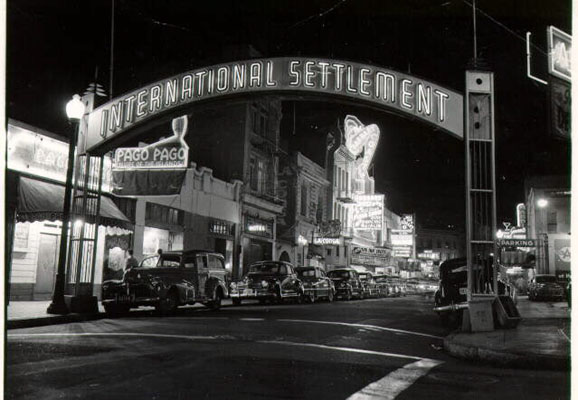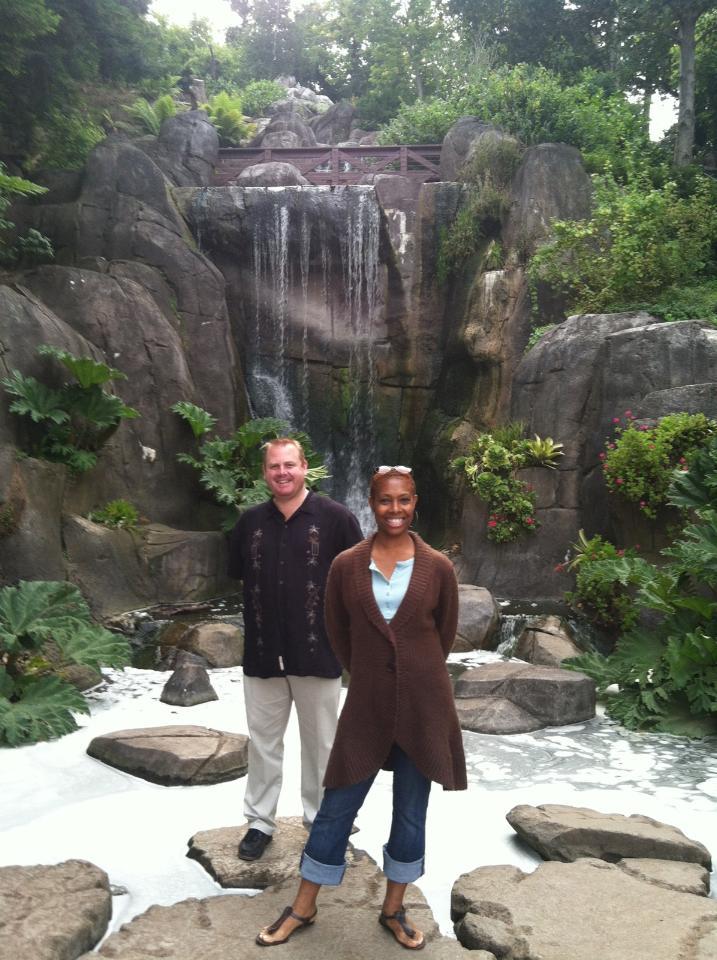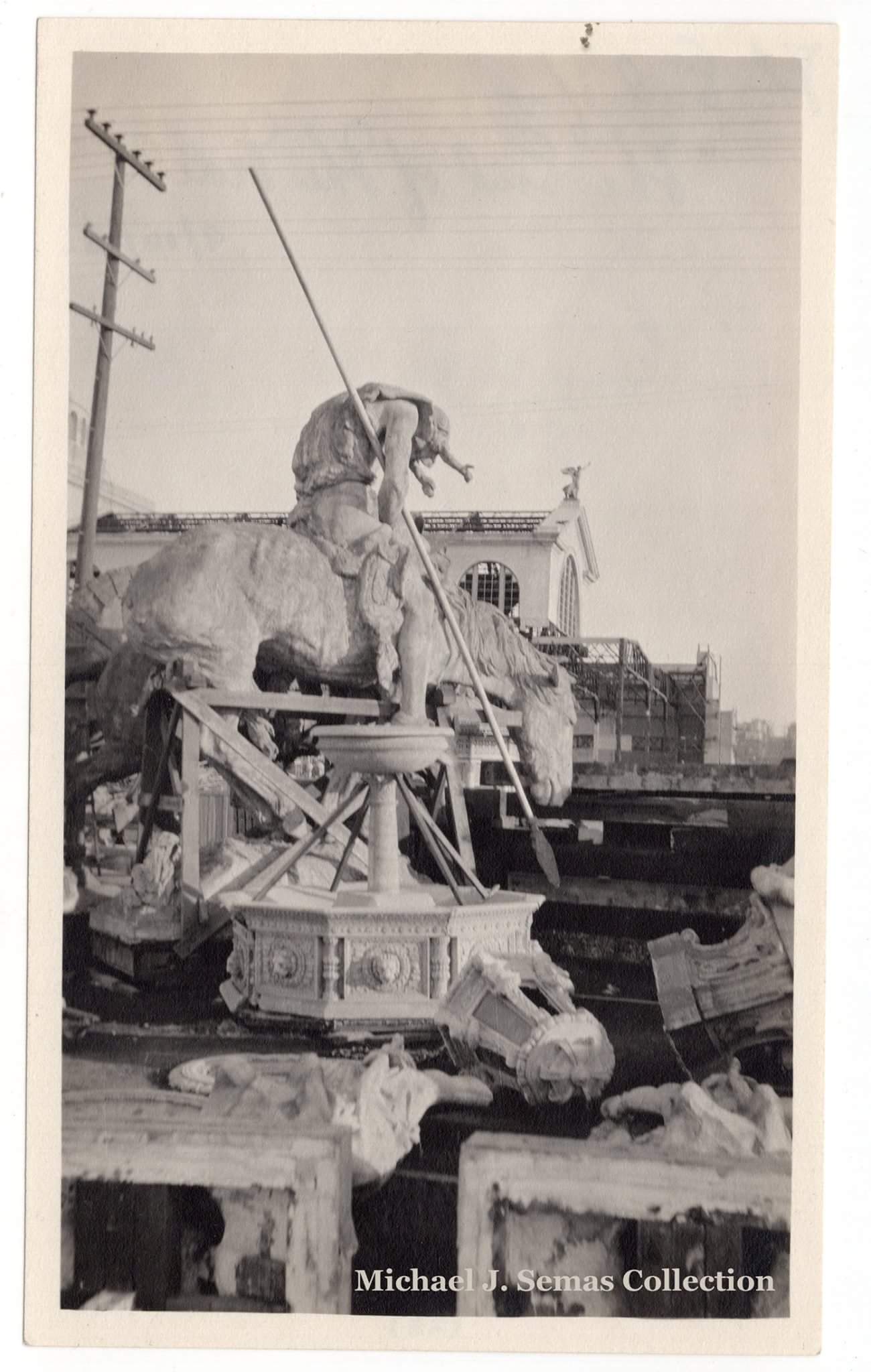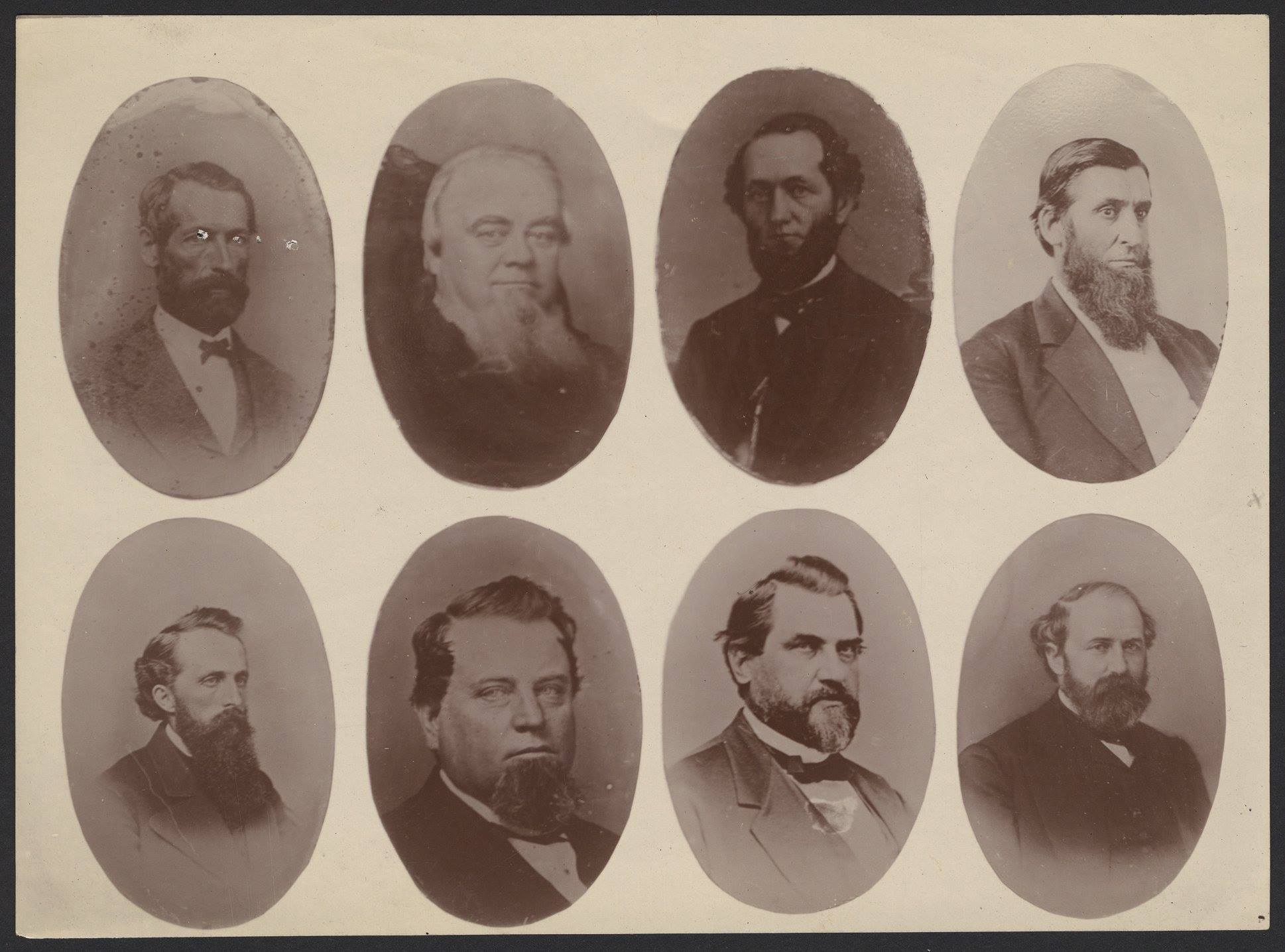We Start at Union Square
Now known as the center of San Francisco's shopping district, Union Square was originally a residential neighborhood with homes and churches surrounding a one-block sand lot.
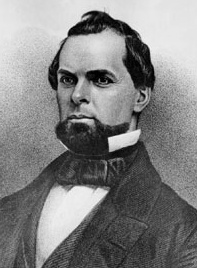


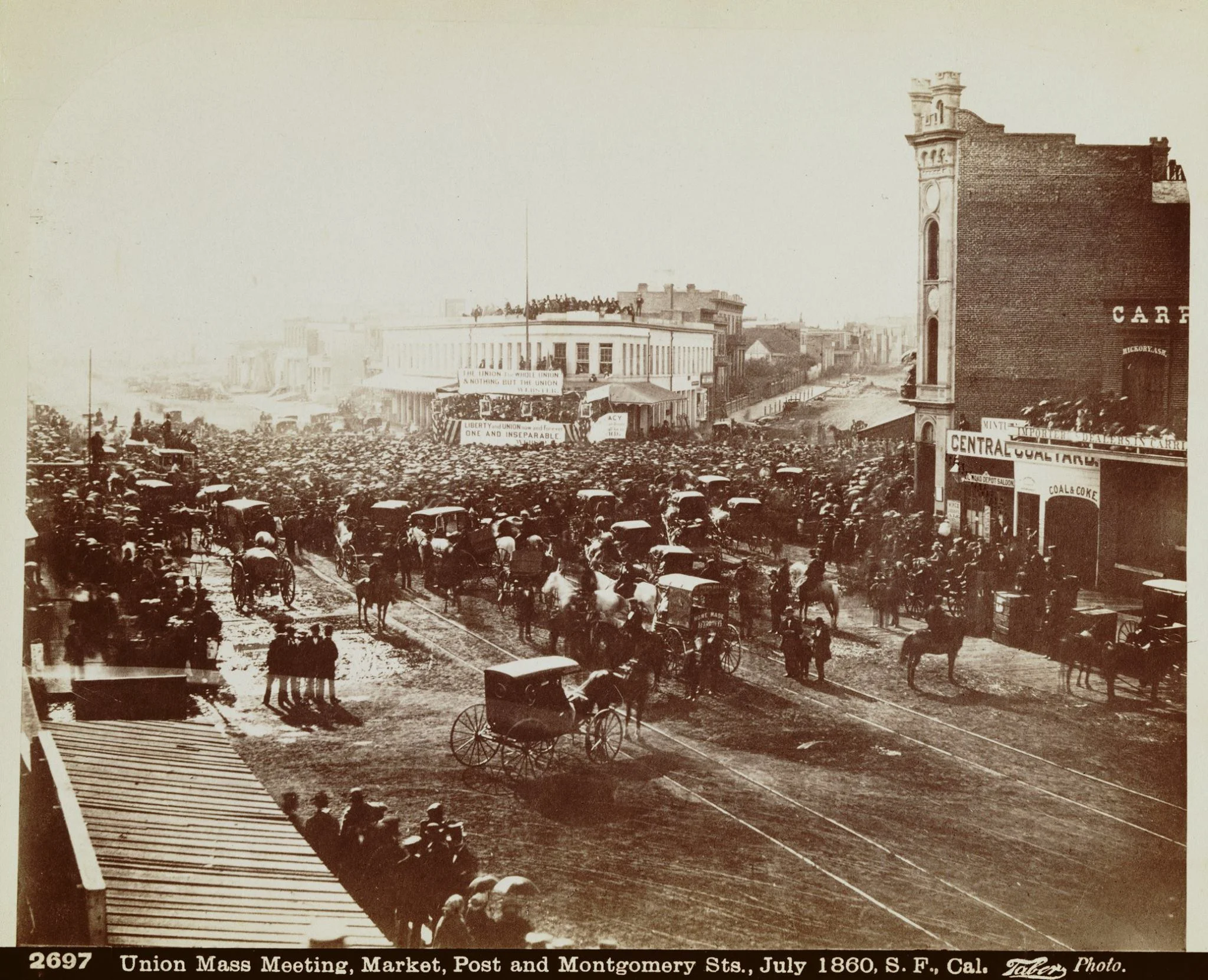
John Geary
Geary, the first mayor of San Francisco designated the land now known as Union Square (Essentially a sand dune named O'farell's mountain after Jasper O'farell, the surveyor who first laid out San Francisco's streets) a public open space in 1850.
Thomas Starr King The square got it's name, "Union Square" during the civil war when Unitarian minister and abolitionist, Thomas Starr King, would hold rallies in the square urging California to take up the Union cause.
Dewey Monument
The monument in the center of the square is was named in honor of Admiral George Dewey, and commemorates his victory in the Battle of Manila Bay during the Spanish-American War in 1898.
Additionally it became a memorial to President William McKinley who was on hand to break ground for the monument on May 23rd, 1901 but was assasinated 6 months later. The statue is Nike, the ancient Greek goddess of victory, who is holding a trident in her left hand for Dewey and a wreath in her right for McKinley.
Adolph & Alma Spreckles








The Square through time







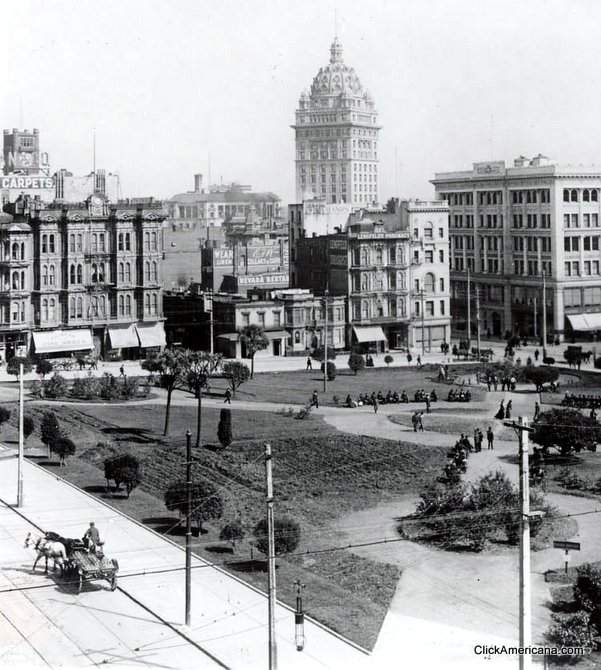

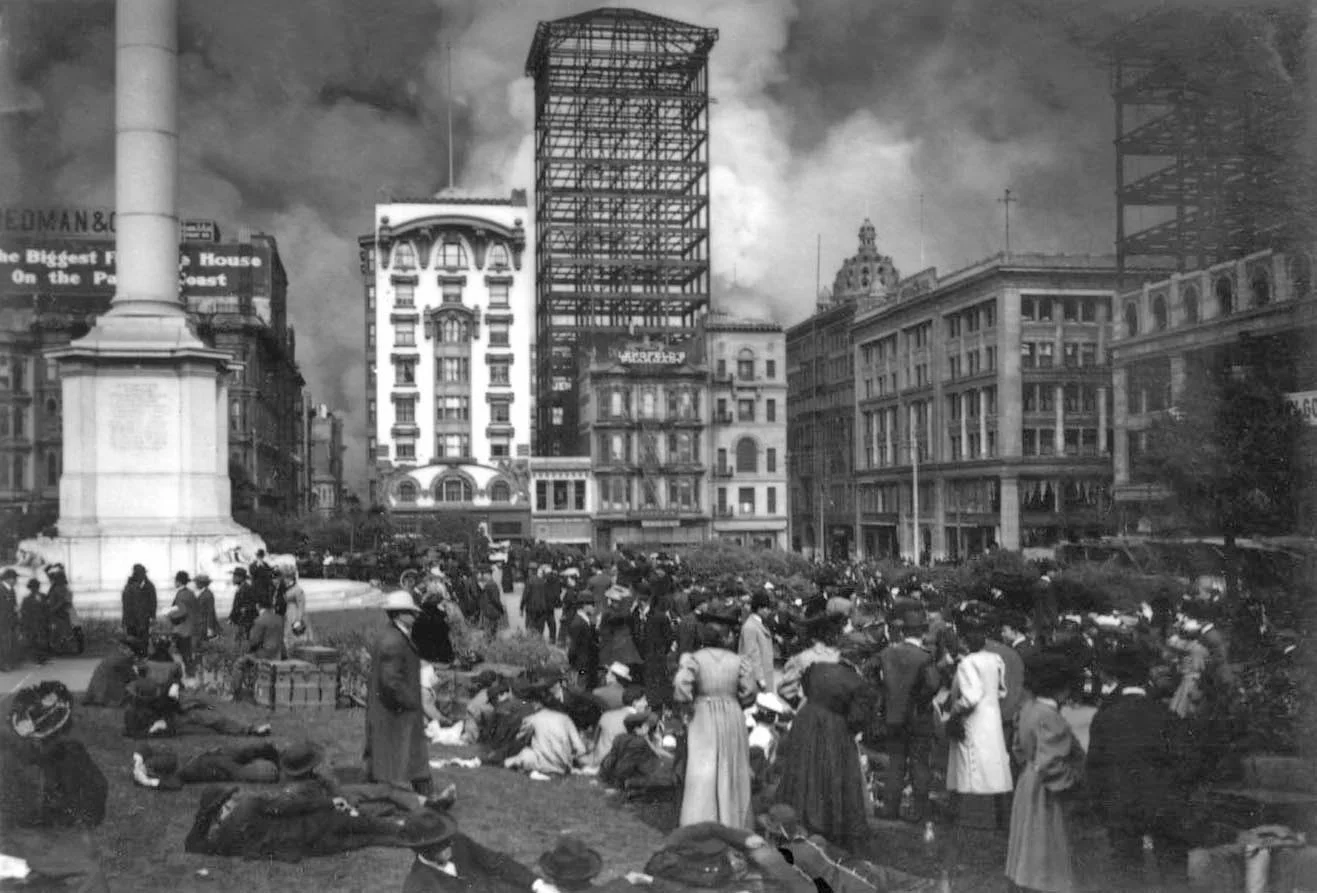
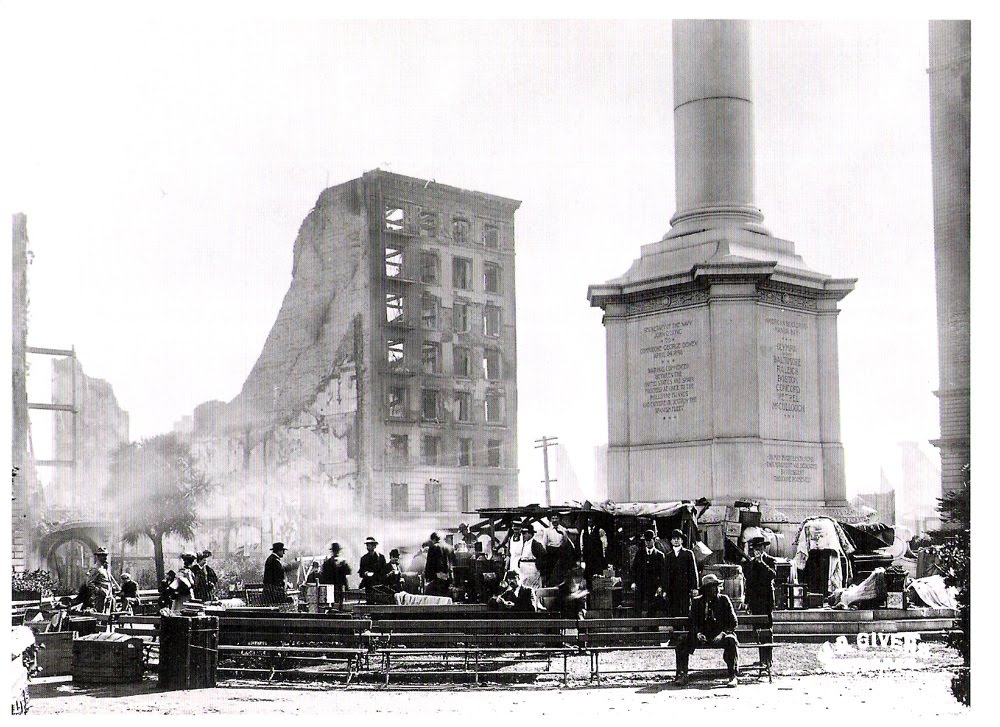

















Theatre St. Francis/Lefty O'doul's
Originally built in 1916, 333 Geary was originally the Theatre St. Francis. It was San Francisco's 1st, movie-only theater. The theater closed in 1919 and was the home of Lefty O'doul's restaurant from 1958 to February of 2017. The original architecture from the St. Francis can still be seen above the dropped ceiling over the former Lefty's dining room.
Lefty's Bloody Mary mix (Made from Lefty's personal recipe) is still sold.
Frances "Lefty" O'doul was born in San Francisco in 1897. He played for the San Francisco Seals as well as several major league teams including the Yankees and Red Sox. He is the only major league player to hit more than 30 home runs and strike out fewer than 20 times in season. His lifetime batting average was .349
Drive West on Geary
Geary Blvd.
Along the way you'll see Edinburgh Castle at 950 Geary st. This was a location for the movie, So I Married an Axe Murder where Mike Meyers' character proposes to his girlfriend during his parents 30th wedding anniversary.
At 1111 Gough st. you'll see the 3rd St. Mary's Cathedral in San Francisco. It's acutal name is St. Mary's of the Assumption, the home of the Church's archdiocese, it's roof looks like a washing machine agitator.
2425 Geary is the address for Kaiser Hospital and the birthplace of SK Morton.
The Coronet theater at 3575 Geary was the premier location for the first five Star Wars movies. All attended by SK Morton.
Since 1934 it has been illegal to bury people in San Francisco. One of the Big 4 cemetaries, The Oddfellows Cemetary, used to be bordered by Geary. All that's left now is the Columbarium at 1 Loraine ct.
San Francisco's 1st Tiki Bar, Trader Sam's, and best ice cream/burger joint are on the same block. 6150 & 6134 Geary.





Land's End


Sutro Baths
On March 14, 1896, the Sutro Baths were opened to the public as the world's largest indoor swimming pool establishment. The baths were built on the western side of San Francisco by wealthy entrepreneur and former mayor of San Francisco (1894–1896) Adolph Sutro.
An amazing glass-roofed structure containing seven salt water swimming pools, fed by the powerful tides at the entrance to San Francisco Bay, vistors could also view the huge collection of odd specimens he had picked up in his travels, including Egyptian mummies, stuffed polar bears and apes, and totem poles.
Sutro Baths is now an eerie ruin, sitting in one of the most beautiful settings in San Francisco.
Transportation
For years, the sandy dunes of the Outside Lands made a trip to the coast long and difficult until several train lines from down the peninsula and from downtown made the trip to Land's End a weekend getaway.
The Cliff House
The Cliff House has had five major incarnations since its beginnings in 1858. That year, Samuel Brannan, a prosperous ex-Mormon elder from Maine, bought the lumber salvaged from a ship that founderedwrecked on the cliffs below. With this material he built the first Cliff House.
The second Cliff House was built in 1863, and leased to Captain Junius G. Foster.
In 1883 the Cliff House was bought by Adolph Sutro. After a few years, the Cliff House was severely damaged by a dynamite explosion when the schooner, Parallel, ran aground on January 16, 1887. The building was repaired, but was later completely destroyed by fire on Christmas night 1894. In 1896, Sutro built a new Cliff House, a seven-story Victorian Chateau, called by some "the Gingerbread Palace", below his estate on the bluffs of Sutro Heights. This was the same year work began on the famous Sutro Baths
Ocean Beach
Playland at the Beach
Golden Gate Park



Before the park, there was mostly sand dunes and a few pine trees.
Along JFK Ave.
You'll see the Dutch Windmill along with its Tulip Garden.
The Bison Paddock
Spreckles and Lloyd Lakes along with Rainbow Falls
The latest Fairy Door is located not far off the main street.
As well as the De Young Museum Tower and the Conservatory of Flowers.






Strawberry Hill at Stowe Lake
The Music Concourse
1894 Mid Winter Exposition
Drive North on Arguello to the Presidio
The Presidio of San Francisco is a former U.S. Army military fort on the northern tip of the San Francisco Peninsula, and is part of the Golden Gate National Recreation Area.
It's been a fortified location since September 17, 1776, when Spanish Captain Juan Bautista de Anza led 193 soldiers, women, and children on a trek from present day Tubac, Arizona, to San Francisco Bay as a Spanish garrison to defend Spain's claim to San Francisco Bay and to support Mission Dolores. It passed to Mexico, which in turn passed it to the United States in 1848. Congress voted to end the Presidio's status as an active military installation of the U.S. Army On October 1, 1994, and it was transferred to the National Park Service, beginning its next phase of mixed commercial and public use.
In addition to wooded areas planted by the US military in the 1840s, trails, scenic vistas overlooking the Golden Gate and Bay, and former gun batteries mostly facing the Pacific Ocean can be found along with 4 art installations by artist, Andy Goldworthy: Spire, Wood Line, Tree Fall, and Earth Wall.
Take Marina Blvd out of the Presidio East Toward Fort Mason
The 1915 PPIE
Any flat land around the outside of San Francisco is fill. This is true of the Marina district which was filled in to host the 1915 Panama Pacific International Exposition.
Few structures still exist from the fair. The elephant statues at the entrance to Vina Del Mar Park in Sausalito and a few buildings that were floated down the by on barges still exist but not in the same place. The only other sturcture left in San Francisco is the Pagoda Gates from the Japanese Pavilion which are now at the Japanese Tea Garden in Golden Gate Park.
Along Marina Blvd.
A detour South down Baker to Beach st. will take you by the former home of Mr.& Mrs. Joe Di Maggio.
Then to Fort Mason for the Wave Organ (A sound machine made of old head stones from the former city cemetaries to amplify the sound of lapping waves), a hostel and a hidden community garden.
In 1867 the Pioneer Woolen Mill dominated the landscape at Black Point - the area we call today Aquatic Park.
The San Francisco Bay had been a dumping ground as the city expanded towards the bay. Many efforts were made to have the area declared a park so the dumping would stop but all efforts failed. Ironically it took the ’30s depression and the WPA Federal Arts Project to get the area protected and the Art Deco-style Maritime Museum built.
Take Hyde St. South Up Russian and Nob Hills
Hyde St.
While going South on Hyde look for the crooked portion of Lombard st. to the East (Your left), and Alice Marble tennis courts to the West.
Alice Marble (September 28, 1913 – December 13, 1990) was a world No. 1 American tennis player who won 18 Grand Slam championships (1936–40): five in singles, six in women's doubles, and seven in mixed doubles (Including one in 1940 with Bobby Riggs). After retirement she worked as an associate editor on Wonder Woman comics and eventually signed on as a spy during WWII, surviving a shot in the back from a Nazi agent.
And just after passing the original Swenson's Ice Cream shop on Union st., keep looking west for Russell alley where Jack Karouac took their famous picture.
And now down Clay St. by Portsmouth Square to The Pramid, Jackson Square and International Settlement at the foot of North Beach
Portsmouth Square















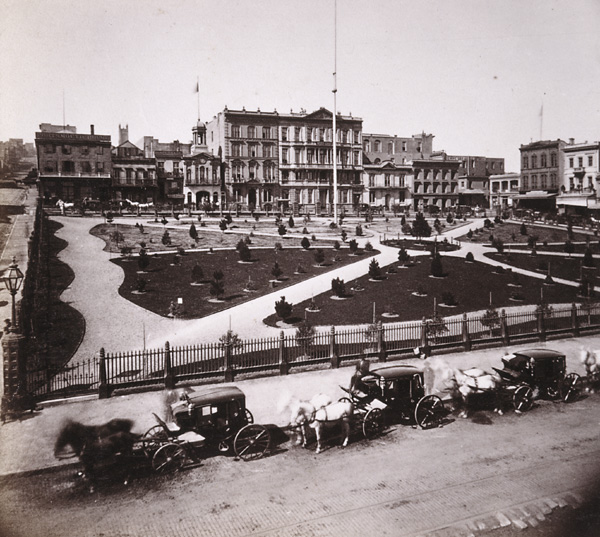





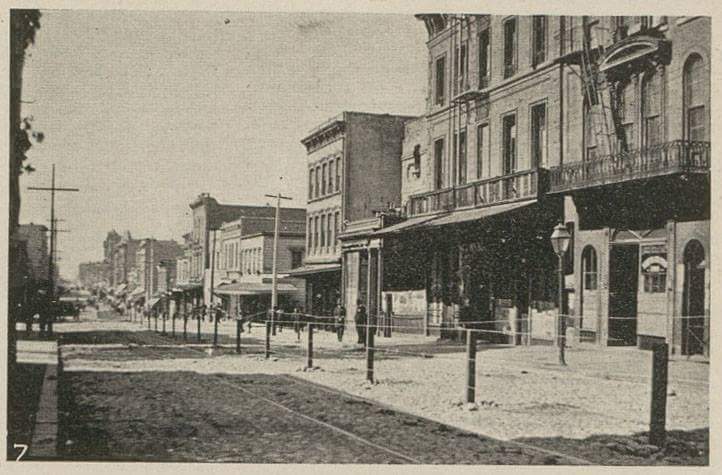

Montgomery/Armada of Golden Dreams





















Jackson Square








